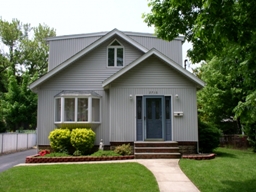What Do Lenders Have To Tell You About Your Real Estate Loan?
Federal “disclosure” forms define the information that creditor businesses MUST provide to consumers applying for real estate loans.
As of Oct 1, 2015 lenders must provide TWO New “TRID” disclosure forms. for the most common kinds of real estate loans First, the Loan Estimate, which covers the key features, costs and risks of a mortgage loan.
For an approved loan this must be returned to the consumer within 3 business days of loan application. If the loan goes forward, the Closing Disclosure form, covering key transaction costs, must be delivered at least 3 business days before loan consummation.
![]()
 After prolonged speculation by economic analysts and news media, the Federal Open Market Committee of the Federal Reserve raised short-term interest rates for the first time in seven years. Committee members voted to raise the target federal funds rate to a range of 0.25 to 0.50 percent from a range of 0.00 to 0.25 percent to be effective December 17. The good news about the Fed’s decision is that the Central Bank had enough confidence in improving economic conditions to warrant its decision. But how will the Fed’s decision affect mortgage rates?
After prolonged speculation by economic analysts and news media, the Federal Open Market Committee of the Federal Reserve raised short-term interest rates for the first time in seven years. Committee members voted to raise the target federal funds rate to a range of 0.25 to 0.50 percent from a range of 0.00 to 0.25 percent to be effective December 17. The good news about the Fed’s decision is that the Central Bank had enough confidence in improving economic conditions to warrant its decision. But how will the Fed’s decision affect mortgage rates? Mortgage closing costs have been coming down in recent years, which is good news for buyers. But if you’re buying a home in the near future, you’ll want to ensure you’re prepared to take full advantage of these lower fees – after all, keeping more money in your pocket is always good. When you close on your mortgage, take these three steps and you’ll find that you’ll pay far less in closing fees than most buyers would.
Mortgage closing costs have been coming down in recent years, which is good news for buyers. But if you’re buying a home in the near future, you’ll want to ensure you’re prepared to take full advantage of these lower fees – after all, keeping more money in your pocket is always good. When you close on your mortgage, take these three steps and you’ll find that you’ll pay far less in closing fees than most buyers would. With the busyness of the holiday season, selling your home during the winter months can often be more difficult than it is in other seasons. If you’re intent on selling before the year is out and you’re looking for some staging pointers, here are a few ways to convince potential buyers that your home will be the perfect place to spend Christmas!
With the busyness of the holiday season, selling your home during the winter months can often be more difficult than it is in other seasons. If you’re intent on selling before the year is out and you’re looking for some staging pointers, here are a few ways to convince potential buyers that your home will be the perfect place to spend Christmas! Last week’s scheduled economic releases included reports on job openings, retail sales and consumer confidence in addition to usual weekly releases on mortgage rates and new jobless claims. The details:
Last week’s scheduled economic releases included reports on job openings, retail sales and consumer confidence in addition to usual weekly releases on mortgage rates and new jobless claims. The details: The idea of using spray paint to make some quick fix-ups to your home might seem uncouth, but it can be a great way to make some easy, economical upgrades that will shift the overall look of your living space. Instead of assuming that spray paint is just for graffiti, here are some simple ways to use a can of quick paint to change up your home’s style.
The idea of using spray paint to make some quick fix-ups to your home might seem uncouth, but it can be a great way to make some easy, economical upgrades that will shift the overall look of your living space. Instead of assuming that spray paint is just for graffiti, here are some simple ways to use a can of quick paint to change up your home’s style.